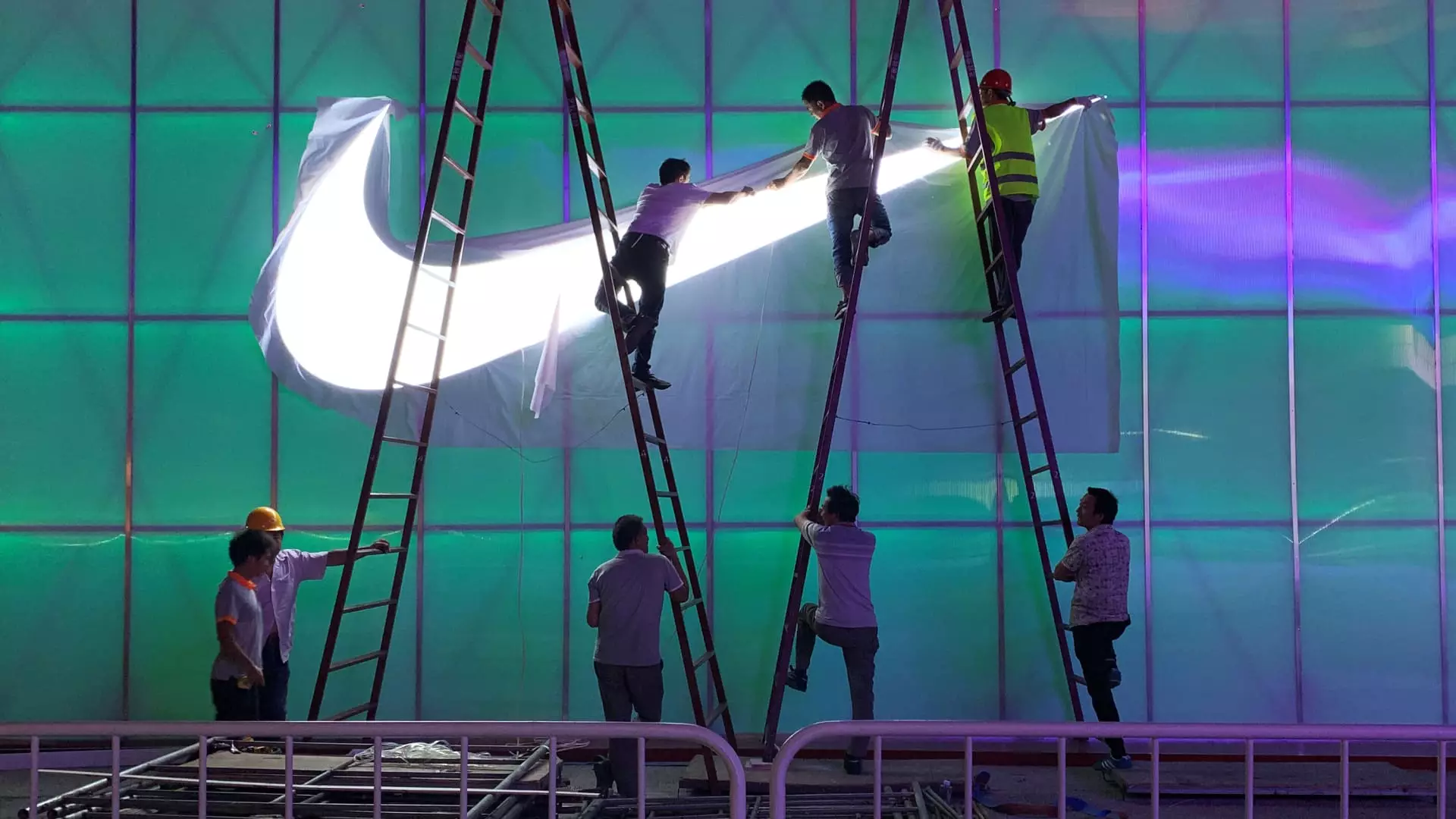As China’s economy begins to show signs of recovery thanks to recent stimulus efforts, two U.S. corporate leaders find themselves at a critical juncture in their respective companies. Brian Niccol, the newly appointed CEO of Starbucks, and Elliott Hill, who takes the reins at Nike, are both navigating a challenging landscape shaped by previous executive decisions and changing market dynamics. The stakes are particularly high since both companies have substantial exposure to the Chinese market, with Bank of America reporting Nike’s direct sales exposure at approximately 14.7% and Starbucks at around 8.6%. With these figures in mind, the efficacy of China’s stimulus measures could prove pivotal in either accelerating their turnarounds or compounding their challenges.
Shifts in Strategy and Focus on China
Niccol’s arrival at Starbucks comes with immediate organizational changes, particularly within the company’s leadership structure in China. Analysts have speculated about the potential for a significant restructuring, including the possibility of forming a joint venture with a domestic company. Such strategic shifts may become imperative as Starbucks looks to establish a stronger foothold in a market that has increasingly favored local brands. Meanwhile, Hill’s vision for Nike also predominantly centers around the Chinese consumer, with the company recognizing that sports participation continues to rise despite short-term market challenges. As both CEOs acclimate to their leadership roles, the focus on revitalizing brand presence in China seems to be of foremost importance.
However, merely banking on China’s stimulus efforts may not suffice to guarantee success for either corporation. In recent years, both Starbucks and Nike have confronted mounting competition from local firms, coupled with wavering consumer sentiment towards foreign brands due to various sociopolitical factors. As outlined by a Bank of America analyst, there are substantial risks tied to consumer expectations that must be evaluated critically. The current sentiment suggests a larger craving for products that resonate on a functional and emotional level—criteria that may be perceived as increasingly subjective amidst changing consumer preferences.
While leadership transitions can spark initial enthusiasm—evidenced by the recent rise in stock prices of Chipotle and Nike—there remains a cautious outlook among investors regarding long-term forecasts. Comments from leading strategists indicate a prevailing wait-and-see attitude toward the impact of the ongoing executive changes and the economic stimulus. Critics argue that the benefits of China’s stimulus are not yet sufficiently defined, thus fostering skepticism about its potential to lead to immediate consumer spending increases. Ellen Hazen, Chief Market Strategist at F.L. Putnam, articulates concerns regarding the clarity of the stimulus’s impact, suggesting that uncertainties loom large about whether it will produce significant consumer benefits.
Realities of Overcoming Competitive Hurdles
Eric Clark, co-portfolio manager of the Rational Dynamic Brands Fund, emphasizes the necessity of a robust pipeline of innovation to return Nike to its high-growth status. He notes that excitement surrounding the new CEO will require demonstrable results—an assertion that reflects broader doubts about the immediate viability of such corporate turnarounds. As both companies have underperformed the market up to this point, the question remains whether consumer sentiment and competitive pressures will permit a resurgence for either brand. Despite the upbeat tone some reports suggest, the reality is that both companies are grappling with high stakes, and the road ahead may be fraught with challenges.
The economic tides in China hold immense potential for two American giants striving for revival amid leadership transitions. Niccol and Hill are tasked not only with rejuvenating their brands but also with understanding and capitalizing on a complex interplay of market forces driven by both local and global influences. While the recent promise of stimulus could rejuvenate consumer spending, the impact on Nike and Starbucks remains uncertain. The industry’s outlook, therefore, necessitates a careful balance between leveraging new leadership and adapting to the unforeseeable ebbs and flows of the consumer landscape in a post-stimulus China. The implications of these decisions will have considerable reverberations within the context of their operations—both in China and across the globe—over the coming years.


Leave a Reply